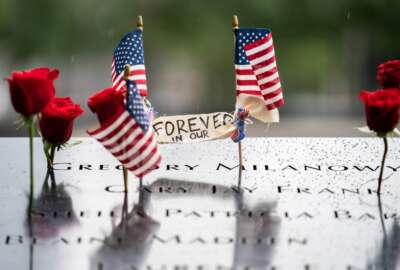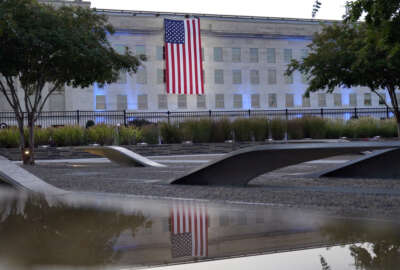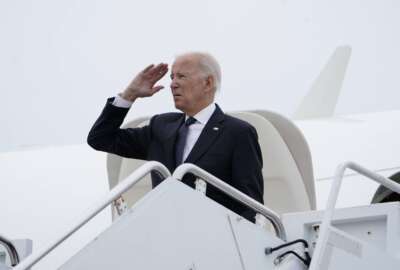‘I knew what it was even before seeing the plane’
A retired Army officer tells Senior Correspondent Mike Causey what is was like evacuating the Pentagon during the events of 9/11.
I was in the Pentagon in a meeting with my boss, the chief, U.S. Army Reserve Maj. Gen. Tom Plewes, on 9/11 when the plane hit the building.
During our meeting I felt a tremor like an earthquake and then outside the office you could hear people running and the lights went out, smoke filled the hallways and you could smell something burning. We thought it was a fire. The meeting was abruptly ended and I headed towards the exit of the Pentagon to the parking lot.
People running by me were shouting that a plane had crashed into the building. Gen. Plewes went towards the Pentagon courtyard to see if anyone needed assistance. I was by the Pentagon exit to the Metro and people were trying to go down the long escalators to the Metro.
A bunch of officers, including myself, held hands to prevent frightened people from going down the long escalator to the Metro tunnel, as we urged them to leave the building and the area as soon as possible. We figured the worse place you could be in an attack on the Pentagon was way down in the ground at the Metro stop. If there were other bombs, you would never survive the falling concrete and steel. People then started leaving the building at the entrance to the Pentagon parking lot. When I got outside the building the smell of burning jet fuel hit me, and I knew what it was even before seeing the plane.
When I was a young boy living in Wisconsin, I lived across from the Milwaukee Airport, and one day an Air National Guard tanker plane filled with jet fuel crashed in the fields behind my house. I was the first person to get to the crash scene, and the smell of burning jet fuel was overwhelming — there were no survivors.
When I walked out of the Pentagon that day and smelled that fuel, I knew what it was immediately, even before I saw the plane. We encouraged people to get out of the Pentagon area so first responders could get to survivors and help put out the fire. As I walked away from the Pentagon, I could finally see part of the plane sticking out of the Pentagon and firefighters trying to put out the fire.
I found out later that day that one of my best friends, LTC David Scales, who had just left our Army Reserve Headquarters office in Crystal City, and had transferred to work for the Army Deputy Chief of Staff for Personnel (DCESPER), was working in the Pentagon area where the plane hit and he was killed instantly. He had a wife and a young son.
I went back towards Crystal City to let my Army colleagues know that I was not hurt or missing. Everyone was let go early but we could not call our anxious families as the phone lines were jammed, and there was no transport back to my home in Centreville, Virginia.
We listened to the news reports about the damage and lost lives in New York and the Pentagon and the hijacked plane that crashed in Pennsylvania. My deputy, Maj. Michael Coughlin, went back to the Pentagon to volunteer to help in any way he could. He ended up being one of the military members who put a giant U.S. flag on the side of the Pentagon where the hijacked plane had hit the building. I spoke at my friend David Scale’s funeral and went to his interment at Arlington National Cemetery.
What a sad day for our country. I am so glad that the hijacker’s final plane did not get a chance to hit the White House or the Capitol Building, thanks to all the brave passengers on that flight. I have gone several times to visit the memorial to all the Pentagon victims of 9/11 on the grounds of the Pentagon and have said prayers for all the victims, and especially my friend David Scales.
—Paul Conrad, retired Army officer
Copyright © 2024 Federal News Network. All rights reserved. This website is not intended for users located within the European Economic Area.





